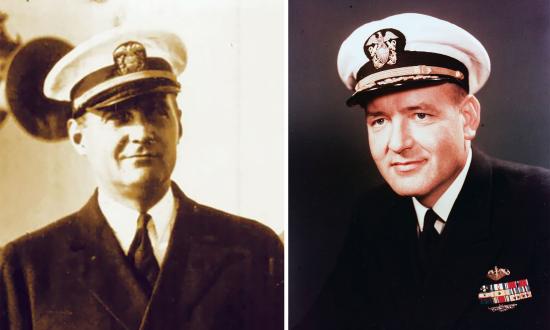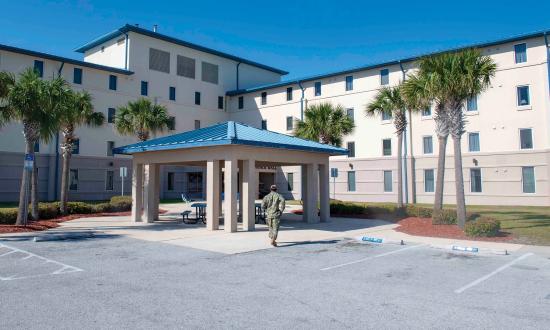Imagine serving your country every day, rain or shine, then going “home” to sleep in your car, unsafe and scared. Your only line of security is your car alarm, if you have one. Imagine knowing that despite getting paid on the 1st and the 15th of every month, you have to beg someone to let you sleep on their couch, because you do not make enough to have your own apartment. Now, before you question why this sailor is not living in the government quarters provided, let me explain.
Basic allowance for housing (BAH) is a U.S.-based allowance determined by geographic duty station, pay grade, and dependency status. In layman’s terms, it is money to pay for rent/mortgage. The process for receiving BAH, though simple to understand, is not a quick one. To request BAH, a sailor must have dependents, be a paid petty officer second class or higher, or be a petty officer third class with more than four years of service. The applicant also must be completely moved out of government quarters prior to submitting a BAH request through their chain of command. So where does the issue lie?
From the time a sailor submits a BAH request to his or her leading petty officer until receiving the first payment, can be two to three months. After the request is approved by the commanding officer (CO), it must then be sent to Personnel Support Detachment (PSD) for processing. During this process, a question should come to mind: Where is this sailor living now? Nowhere, and everywhere. The sailor was instructed to move out of the barracks prior to submitting the BHA request but was not given a place to go.
“Well, where will I go in the meantime?” This is the question many sailors continue to ask, myself included. Our leaders advise us either to ask a friend to sleep on their couch or to go to the bank and get a loan to pay for housing until our BAH is processed. But when that loan process isn’t feasible, we’re lectured on how we should have thousands in savings for situations such as this. Keep in mind, most junior sailors are between the ages of 18 and 21. How much did you have saved by then?
When I went through this process, I did not think of the sailors who would come after me and how they would face the same issue. I just did as I was instructed. I found a friend. I slept on her couch. And every month I paid her $700 in rent until I received my BAH. It was not ideal, but I had no other options. A loan would not help me in this situation, because apartments require a copy of a leave and earnings statement (LES) to verify your monthly income, not how much you have in your bank account. Like most sailors, I did not have enough money in savings to pay for a hotel for a month, or enough to cover the initial apartment cost plus two months’ rent. And sleeping in my car would have been my last option.
I am currently stationed in California, which has one of the nation’s largest military populations. A one-bedroom, one-bathroom apartment can easily cost $1,600 a month, on the cheap end. After paying a deposit ($500), first month’s rent ($1,600), and renters’ insurance ($240), that’s $2,340 out of pocket just to move in. No furniture. No ceiling lights. Just four walls and a roof. After three months of waiting to receive BAH, a sailor would have spent almost $6,000 in hopes of backpay. I have been active duty for four years, and I am an E-5. In three months I make $8,673 before taxes in base pay. An E-4 would struggle to survive if he or she were to move out of the barracks while trying to support a family.
Some might argue that sailors should not move out until they are financially stable and have enough money in their savings account but everyone’s situation is different. People often forget about single sailors who are pregnant or those who take on the burden during a family emergency. Some sailors have no choice but to move out and continue.
For example, an E-5 sailor transferred from a ship in Guam to a ship in San Diego, attending school en route. Her ship was out to sea when she arrived, and she was not previously receiving BAH, so she checked into the barracks that night. In the following days, she was instructed that because of her rank, she would have to move out of the barracks and request BAH. She tried to communicate why this would be a problem to her leading chief petty officer and her detailer but received no help. She asked multiple times where she was supposed to live and was instructed either to stay in a hotel at her own expense until the paperwork was processed or to find a friend. Luckily, I was that friend. She was scared and nervous, and I never want to see a sailor feel like that again. If she had not known me, I do not know where she would have ended up sleeping that night or the nights to follow.
How can the Navy fix this issue to better help sailors in the future? Because it does no good to present a problem without a solution, right? What if the Navy removed the rule that a sailor must be out of government quarters prior to submitting a request to receive BAH? This would ensure that sailors never have to question where they will sleep and can focus on the mission at hand.
Second, when sailors’ BAH requests are approved by the CO, they should sign a NAVPERS 1070/613, instructing them that they have 60 days to check out of government quarters. Here is why these 60 days are important. The first 30 days allow the sailors’ requests to be processed through PSD. The second 30 days ensure sailors are receiving BAH prior to removing them from government quarters. Since a BAH transaction will normally start on the 1st of the month, sailors should receive their first BAH payment within the second 30 days. A change as simple as this would allow sailors to have a smooth transition without worry or fear.
Junior enlisted sailors are the heart of the Navy’s workforce, and the service should do a better job of caring for them. The Navy also should do a better job of reminding them of programs that can help them save money and improve their work-life balance, such as the Transportation Incentives Program System (TIPS), just as the service reminds them of General Military Trainings (GMTs). At times, service leaders get complacent, and as the year groups come and go, we have to remind ourselves that every day is a learning experience for another sailor.
The Navy is a strong workforce, but it still has blemishes. We cannot fix every problem in one day, and some problems have many factors that we have to take into account. But when there is a solution, simple and cost-effective, the Navy should consider it. In the end, the less stress put on sailors, the more efficiently they will work.







